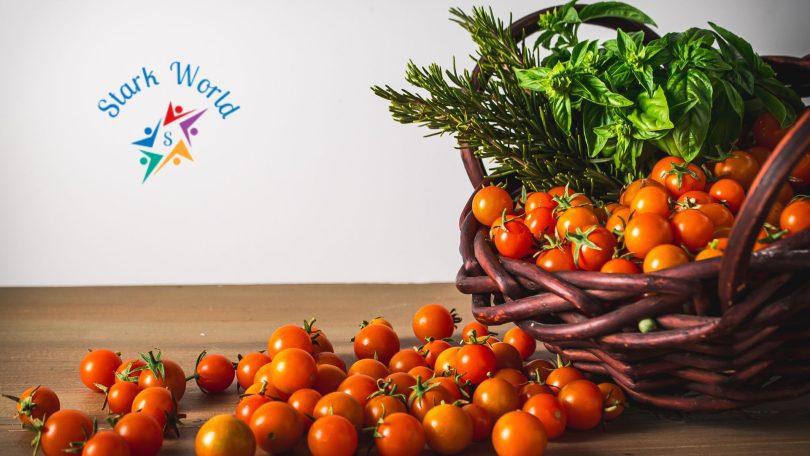With the rise of supermarkets and international shipping, an incredible array of fruits and vegetables is available year-round. However, this convenience often comes at the cost of flavor, nutrition, and sustainability.
In contrast, seasonal produce offers several advantages, from better taste and nutritional content to lower prices and less environmental impact. So, how can we make informed decisions about what’s in our shopping baskets and on our plates? Let’s explore the realm of seasonal produce.
Introduction
Importance of choosing seasonal produce
Seasonal produce refers to fruits and vegetables that are grown and harvested in their natural growing season. Unlike imported produce that travels thousands of miles before reaching your plate, seasonal produce is usually grown locally and picked when it’s ripe and packed with nutrients.
Choosing seasonal produce not only supports local farmers but also helps maintain ecological balance. When you consume fruits and vegetables according to their natural cycles, you contribute to sustainable farming practices that respect and work with nature’s rhythms instead of trying to override them for commercial gain.
Benefits of eating seasonal produce
Eating seasonal produce has numerous benefits. For starters, seasonal fruits and vegetables tend to be fresher and tastier than their out-of-season counterparts. This is because they’re allowed to ripen naturally on their parent plant rather than being picked prematurely and transported across continents.
Moreover, seasonal produce is typically more nutritious. Certain nutrients, particularly vitamins, start to degrade as soon as produce is harvested. By eating seasonally, you’re likely consuming produce closer to its harvest time, which means you’re getting more of the beneficial nutrients these foods have to offer.
Finally, seasonal produce is often cheaper. When fruits and vegetables are in season, they’re abundant, and this supply can lead to lower prices for consumers.
Why Choose Seasonal Produce
Better taste and flavor
One of the primary reasons to choose seasonal produce is the superior taste. Fruits and vegetables grown in their proper season have more time to develop their flavor. They are harvested at peak ripeness, when they are most delicious. The difference in taste between a strawberry picked fresh in spring and one imported in winter is noticeable. Simply put, seasonal produce tastes the way nature intended.
Higher nutritional value
Seasonal fruits and vegetables are also nutritionally superior. Recent studies suggest that crops picked at peak ripeness – which is only possible when they’re grown in season, are more nutrient-dense than those harvested early to be shipped and stocked on grocery store shelves. For instance, a freshly picked apple from a local orchard in the autumn will likely contain more vitamins than one bought from a supermarket in the spring.
Lower cost
When produce is in season locally, the relative abundance of the crop usually makes it less expensive. Growers are harvesting a large quantity of the produce at one time and need to sell it quickly before it spoils, which drives down the cost. This is a win-win situation. You get to enjoy fresh, flavorful produce without putting a dent in your wallet.
Environmental benefits
Choosing seasonal produce also has significant environmental benefits. Out-of-season produce must be shipped from other parts of the world, which consumes a great deal of energy and contributes to air pollution and greenhouse gas emissions. By contrast, seasonal produce is often grown locally or regionally, drastically reducing the need for long-distance transportation and helping to decrease our carbon footprint.
How to Identify Seasonal Produce
Research local growing seasons
The first step to identifying seasonal produce is to understand your local growing season. This can vary greatly depending on where you live. Many online resources provide regional seasonal food guides that can help you know what to look for throughout the year. You can also ask local farmers or at farmers’ markets. They are usually more than happy to share information about what’s in season and why it matters.
Visit farmers markets
Farmers markets are an excellent place to find fresh, seasonal produce. Plus, you’ll have the opportunity to meet the people who grow your food. Farmers can tell you more about how their crops are grown and offer tips on how to prepare them. Remember, the variety of fruits and vegetables at the farmers market changes with the seasons!
Look for signs in grocery stores
Many grocery stores now promote seasonal produce, so keep an eye out for signs indicating what’s currently in season. Typically, produce that’s in season will be more prominently displayed and may be on sale. However, it’s still a good idea to double-check; just because it’s in the store doesn’t necessarily mean it’s in season for your region.
Tips for Choosing the Best Seasonal Produce
Inspect appearance and texture
When choosing seasonal produce, start by checking its appearance. It should look fresh and vibrant, not wilted or bruised. The texture can also tell you a lot about its freshness. For example, apples should be firm to the touch, while tomatoes should give slightly under pressure.
Check for ripeness
Some fruits continue to ripen after being picked, like bananas and avocados, but many do not. Therefore, it’s important to choose fruit that is already ripe. Look for fruits that are bright in color and have a pleasant aroma. Be mindful that overripe fruits will feel too soft and may have brown spots.
Smell for freshness
Many fruits and vegetables emit a fresh and fragrant scent when they’re ripe. Don’t be shy; give them a sniff! For example, a ripe melon or peach will often smell as you’d expect it to taste. If there’s no scent, the fruit is probably not ripe yet. If the smell is overly strong or sweet, it may be overripe.
Consider weight and size
Weight and size can also be indicators of good-quality seasonal produce. Heavier fruits and vegetables are often juicier and more flavorful. When it comes to size, look for uniformity; fruits and vegetables that are too small or too large may not have developed properly.
Storing and Using Seasonal Produce
Proper storage techniques
To make the most of your seasonal produce, proper storage is essential. Some fruits and vegetables, like berries and leafy greens, are more delicate and should be consumed quickly.
Others, like root vegetables and apples, can be stored for longer periods. Understanding the optimal storage conditions for each type of produce will help prolong its freshness and taste.
For example, leafy greens should be stored in a plastic bag with a damp paper towel to maintain moisture. Root vegetables, on the other hand, can be kept in a cool, dark place like a cellar or fridge to prevent them from sprouting or rotting.
Creative recipe ideas
Seasonal produce broadens the realm of culinary possibilities. Take advantage of the flavors and textures of the fruits and vegetables in season to create delicious meals. Whether you’re making a refreshing summer salad with ripe tomatoes and crisp cucumbers or a comforting winter stew with root vegetables, there are countless recipes available that highlight the best of each season.
Experimenting with different cooking methods and flavor combinations can add excitement to your meals and introduce you to new ingredients. Feel free to unleash your creativity in the kitchen!
Meal planning with seasonal produce
Planning your meals around seasonal produce can not only improve the taste and nutritional value of your meals but also save you money. By incorporating what’s in season into your meal plans, you can take advantage of the abundance and lower prices of certain fruits and vegetables.
Start by researching what’s in season during a specific month or season. Use this information to create a meal plan that includes a variety of seasonal produce. This way, you’ll enjoy the freshest ingredients, support local farmers, and make the most of the seasonal flavors.
Conclusion
Choosing the best seasonal produce is not only a smart choice for your taste buds and health, but also for the environment and local economy.
By understanding the importance of seasonal produce and learning how to identify, choose, store, and use it, you can enhance your culinary experiences, support sustainable farming practices, and make a positive impact on your community.







